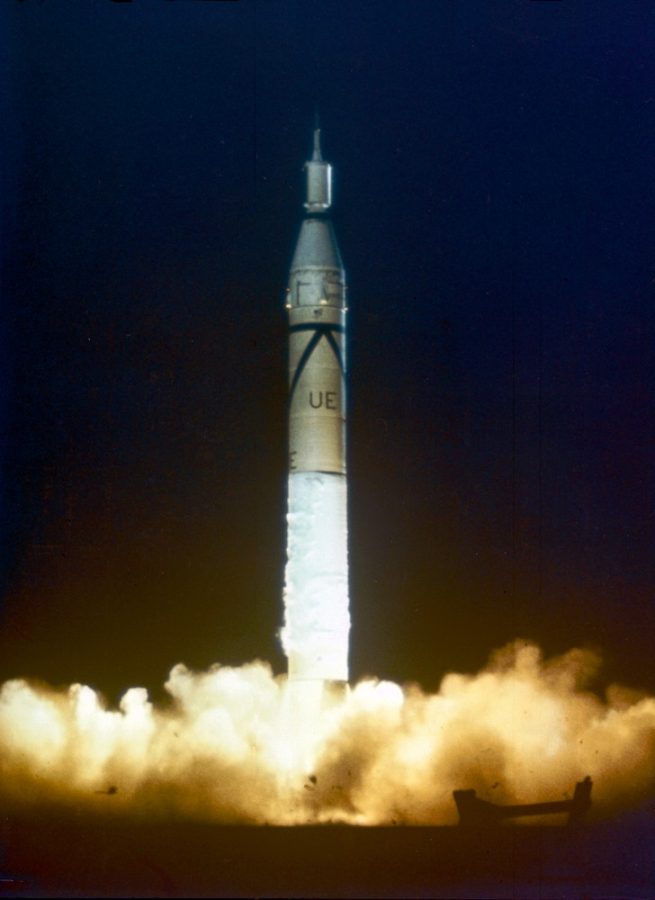March 31 isn’t just the last day in March. It is also a day of scientific discovery. Ranging from tragedies and innovations in aircraft technology to multiple advancements in space travel, the science history of March 31 is not to be missed.
Sports hero killed in plane crash, changing regulations and airplane engineering
Transcontinental and Western Air (T&WA) Flight 599 crashed in Kansas in 1931, killing eight people and leading to a range of aviation regulations and improvements. Among the fatalities was renowned Notre Dame football coach Knute Rockne.

The Fokker Trimotor had wooden wings and was on route to Los Angeles from Kansas City, Missouri. The plane crashed between Kansas City and Wichita, and it was initially unknown what caused the crash. There was no warning that the plane was going down, save for the co-pilot’s call to Wichita, where he said that the weather was becoming difficult to fly in. An investigation discovered that moisture had leaked into the wooden wing and loosened the glue holding the structure together.
The crash and death of Rockne led to a nation in mourning, as Rockne was an admired football coach and considered a national hero.
The public demanded an in-depth investigation, as well as aviation improvements. Fokker Trimotor planes were required to undergo more inspections and improvements, which almost bankrupted T&WA.
After the crash, airlines stopped using wood to build planes and switched to an all-metal model. Several famous aircrafts developed in response to the crash; among them was the Boeing 247, considered to be the first modern aircraft. As aircraft improved, regulations and inspections increased, to which crashes decreased dramatically.
RELATED: Solitary ice volcano on dwarf planet once one of many
First commercial civilian computer launched in the United States
In 1951, the United States Census Bureau signed a contract for the first commercial civilian computer, known as UNIVAC I (Universal Automatic Computer I).
UNIVAC I was designed for business and administrative tasks, such as basic arithmetic and data transfer. This was the first time a computer was designed for non-military use.
The Remington Rand company tested the machine against punch-card machines before contracting with the U.S. Census Bureau, U.S. Air Force and the U.S. Army Map Service.

In order to build awareness of their computer, Remington Rand joined with broadcaster CBS and gave UNIVAC I a one sample of the voting population in order to predict the upcoming presidential election. UNIVAC I correctly predicted that Dwight D. Eisenhower would defeat the popular Adlai Stevenson, who had been leading in polls up to that point.
When the Census Bureau contracted for production, Remington Rand began to develop several more models, later purchased by other government agencies.
The computer proved to be a useful tool, but most organizations and businesses were unable to afford it. The company donated a UNIVAC I to Harvard University, University of Pennsylvania and Case Institute of Technology in Cleveland, Ohio.
RELATED: Flying the friendly skies: UA scientists use airplanes to research climate change
The first Moon orbiter is launched
1966 marks the year that Russia launched the first space craft to go into Lunar orbit: Luna 10. Luna 10 was intended to gather information about lunar orbit and the Moon, such as the its magnetic pull.
Several of the instruments on board measured infrared emissions and radiation.
The launch was coordinated so that Luna 10 would complete an orbit at the same time that the 23rd Congress of the Communist Party of the Soviet Union met. At the time of the meeting, it played “The Internationale,” a left-wing anthem used by communists, socialists and social democrats.
Scientists involved in the project initially claimed that the broadcast was occurring live from Lunar orbit; it was 30 years until the public became aware that the song had been recorded the day before, due to concerns over a live broadcast from the Moon.
Luna 10 was the second attempted mission of this nature; Russia’s first attempt occurred March 1 but never made it into orbit. Luna 10 was battery-powered and continued its mission for 56 days before its batteries died and radio signals were cut off.
The first U.S. satellite returns to Earth
After over a decade in space, Explorer 1, the United States’ first satellite, returned to Earth with evidence of previously unseen space phenomena.
Engineered by the California Institute of Technology, Explorer 1 had temperature sensors, acoustic detectors and an elongated body to aid it in movement. It was launched on a Juno rocket and was powered by mercury batteries. While transmission of data stopped May 23, 1958, the satellite didn’t return to Earth until March 31, 1970, crossing into the atmosphere above the Pacific Ocean.
Explorer 1’s data spurred much scientific progress, such as reigniting interest in the physics field of rigid body dynamics. It also led to the discovery of the Van Allen radiation belt, a zone of charged particles held in place by the Earth’s magnetic pull.
The success of Explorer 1 led to the Explorer project, which is still active and operated by NASA. It has since partnered internationally through the joint European Space Agency-Russian-U.S. project INTEGRAL.
Explorer 1 was launched as part of the Space Race in response to the Russian success of the first satellite, Sputnik. The military suggested the project to allow the United States to remain on par with Russia and its advancing technology and science.
Follow Nicole Morin on Twitter.










